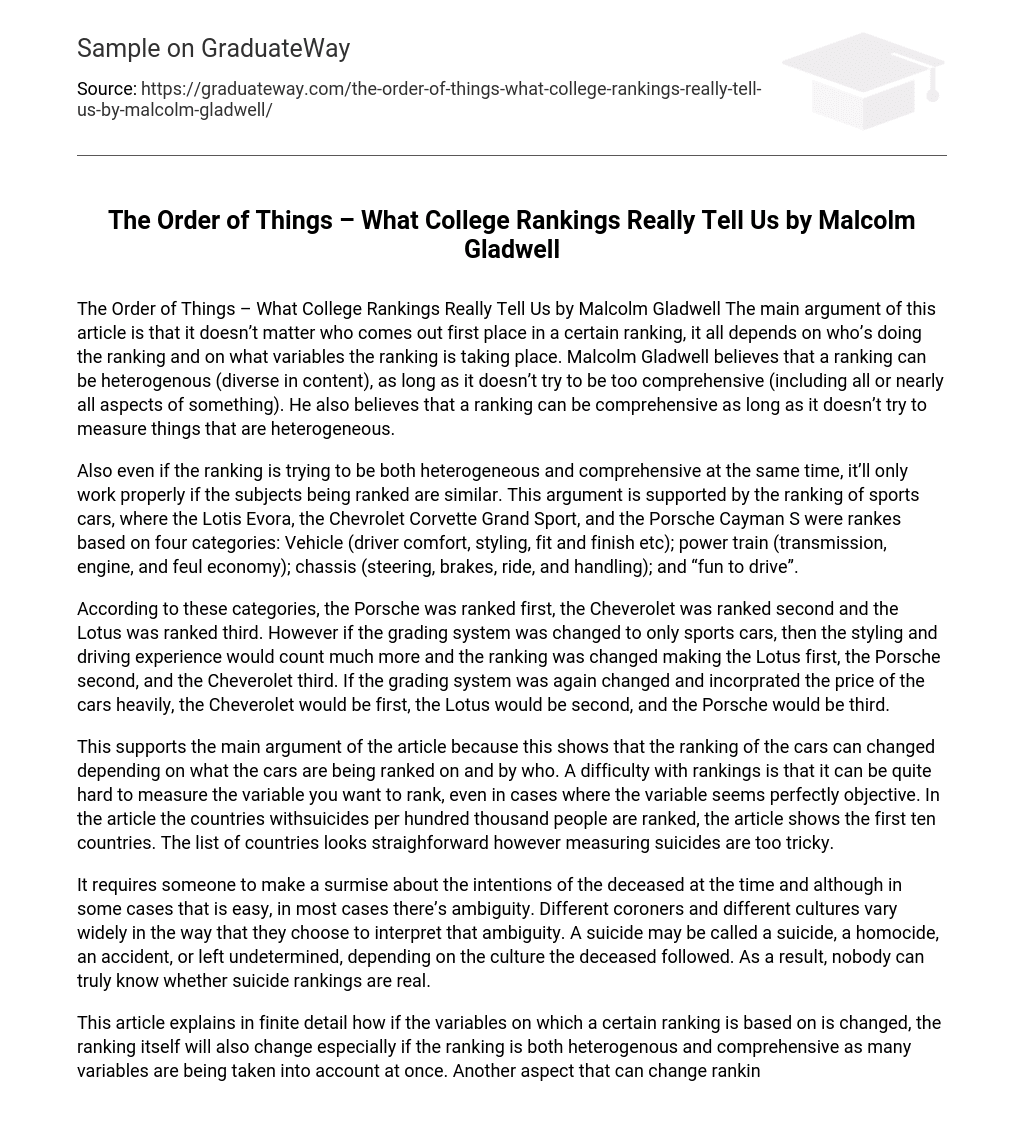The main argument of this article is that it doesn’t matter who comes out first place in a certain ranking, it all depends on who’s doing the ranking and on what variables the ranking is taking place. Malcolm Gladwell believes that a ranking can be heterogenous (diverse in content), as long as it doesn’t try to be too comprehensive (including all or nearly all aspects of something). He also believes that a ranking can be comprehensive as long as it doesn’t try to measure things that are heterogeneous. Also even if the ranking is trying to be both heterogeneous and comprehensive at the same time, it’ll only work properly if the subjects being ranked are similar. This argument is supported by the ranking of sports cars, where the Lotis Evora, the Chevrolet Corvette Grand Sport, and the Porsche Cayman S were rankes based on four categories: Vehicle (driver comfort, styling, fit and finish etc); power train (transmission, engine, and feul economy); chassis (steering, brakes, ride, and handling); and “fun to drive”.
According to these categories, the Porsche was ranked first, the Cheverolet was ranked second and the Lotus was ranked third. However if the grading system was changed to only sports cars, then the styling and driving experience would count much more and the ranking was changed making the Lotus first, the Porsche second, and the Cheverolet third. If the grading system was again changed and incorprated the price of the cars heavily, the Cheverolet would be first, the Lotus would be second, and the Porsche would be third. This supports the main argument of the article because this shows that the ranking of the cars can changed depending on what the cars are being ranked on and by who.
A difficulty with rankings is that it can be quite hard to measure the variable you want to rank, even in cases where the variable seems perfectly objective. In the article the countries withsuicides per hundred thousand people are ranked, the article shows the first ten countries. The list of countries looks straighforward however measuring suicides are too tricky. It requires someone to make a surmise about the intentions of the deceased at the time and although in some cases that is easy, in most cases there’s ambiguity. Different coroners and different cultures vary widely in the way that they choose to interpret that ambiguity. A suicide may be called a suicide, a homocide, an accident, or left undetermined, depending on the culture the deceased followed. As a result, nobody can truly know whether suicide rankings are real.
This article explains in finite detail how if the variables on which a certain ranking is based on is changed, the ranking itself will also change especially if the ranking is both heterogenous and comprehensive as many variables are being taken into account at once. Another aspect that can change rankings is who the rankings is done by as everyone has their own opinions and thoughts and depending on what that specific person thinks or feels about a certain subject will alter how they will rank a certain subject compared to somebody else. For example if somebody was told to rank colleges based on their ‘graduation rate performance’, the school with the highest graduation rate will be ranked as first. On the other hand if those same colleges were ranked based on tuition fees, in this case the variable the ranking was based on has changed, there is a possibilty the school ranked first for the highest graduation rate would be ranked somewhere below as it may have very high tuition fees.





